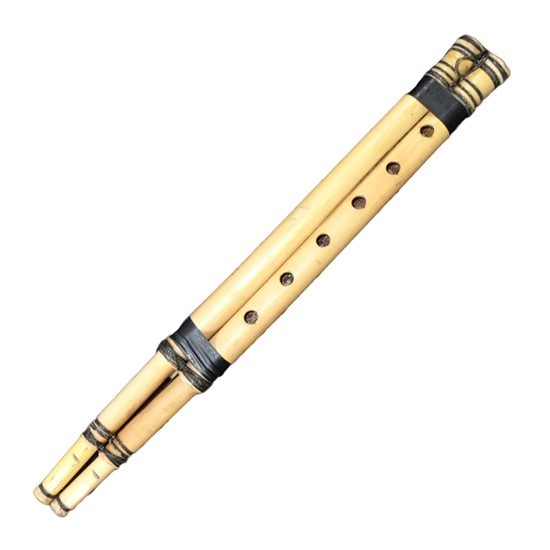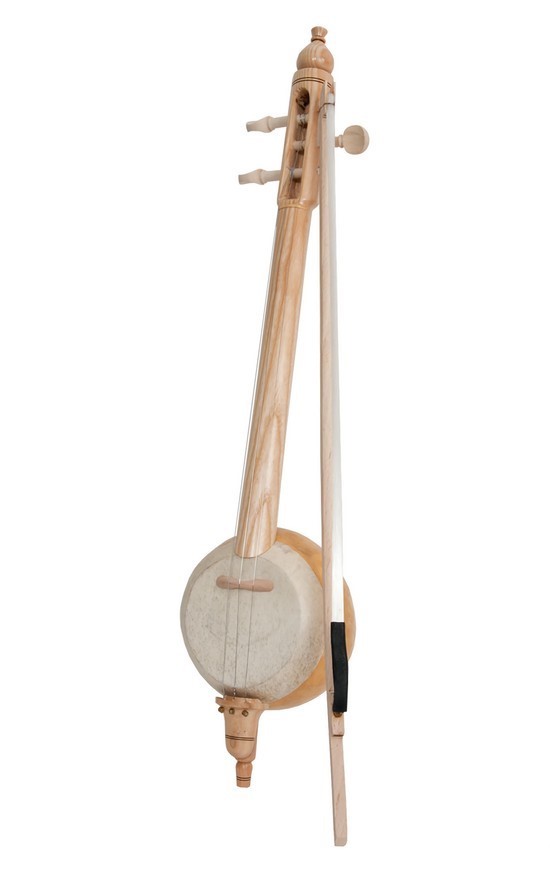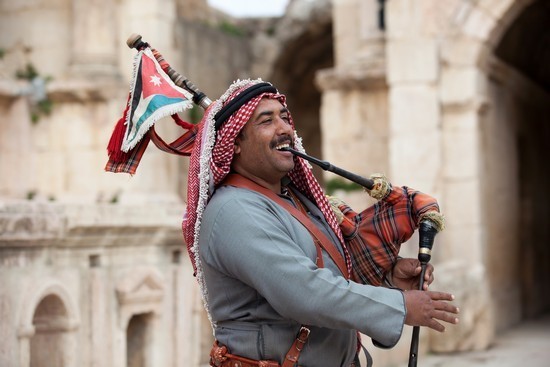Situated at the crossroads of three continents, Jordan enjoys geographical
and population diversity, and a rich culture. The
traditional music, dance, and
attire are notable parts of it.
اضافة اعلان
Dances
Jordanian dances are accompanied by traditional music and instruments; they
may reflect joy, courage, unity, and generosity, depending on the occasion.
Dabke is a
traditional Levantine folk dance popular in Syria, Lebanon, Palestine, and
Jordan. It is a circle and line dance that is commonly performed at joyous
occasions, like weddings. The line forms from right to left, and the dabke
leader stands in front, alternately facing the audience and the other dancers.
Dabke, one of
Jordan’s most popular traditional dances, is performed by men or women
separately, but also together. The dancers form a line shoulder to shoulder,
holding hands or having their arms over the shoulders of the two dancers on
either side. They walk in a circle as a group, performing movements punctuated
by kicks and stomps. A flute called nay, a drum called tableh, and a reed
instrument called mizmar are some of the instruments that accompany the dance.
It is, in essence,
a dance of togetherness and a positive expression of nationalism.
The word is
believed to come from the Levantine Arabic word dabka, which means “to stamp
one’s feet” or “to make a noise”.
The dance’s
rhythmic jumps may have originated in ancient Canaanite fertility rites
involving agriculture, where they would have been used to ward off bad spirits
and safeguard young plants.
According to Youssef
Ibrahim Yazbec, a Lebanese historian, dabke may have stemmed from Phoenician
dances that date back thousands of years.

Another hypothesis
is that dabke began as a method of hardening mud-based roofs. To help compact
the material and prevent cracks from forming, people would come together and
stomp on the roofs of houses.
Al-Samer is a Bedouin dance and singing
practice that is popular throughout the country. It is part of the Jordanian
folklore and is performed on a variety of occasions, most commonly at wedding
ceremonies due to its significant lyrics. This practice was placed on the
UNESCO List of Intangible Cultural Heritage in 2018.
The visual
aspects, acoustic elements, and movements are executed in a clear, coordinated,
and precise order.
Practicing Al-Samer strengthens the attendees’
social bonds. Dancers line up and start clapping, then one or two sing and one
person or the group responds. The performance includes roles designated to
specific people, like al-hashi: a female relative of one of the attendees who
dances in front of Al-Samer line. The ritual also involves sharp applause while
bending down, and rising up with a hissing sound. This is usually performed for
one night but can go on for longer.
Musical instruments
Jordanian music is noted for
its richness and wide range of elements, making it a well-known and popular art
form.
Jordanian folk music is distinct from that of its
neighbors, such as Syrians and Saudis, due to its considerable bedouin
influence. Popular rural zajal songs feature improvised poetry accompanied by a
rebab and reed pipe ensemble.
 Mijwiz
Mijwiz, meaning “dual” in Arabic,
is a traditional Middle Eastern double-pipe, single-reed woodwind instrument.
It is made up of two small bamboo pipes of similar length with reed tips joined
together.
In the Levant, the mijwiz is used to accompany
either belly dancing or dabke. Many popular folk songs feature the mijwiz. The
instrument’s name is even mentioned in the popular Lebanese dabke song “Jeeb el
mijwiz ya Abboud”.
Arghul (or yarghoul) is
structured similar to the mijwiz and produces similar sounds. Both are the
ancestor of the Scottish bagpipes, but when playing the mijwiz, the player’s
cheeks act as bags that retain the air.
Oud is one of the most prominent
instruments in Arabic music. It produces full and deep sounds, which give songs
a traditional tone. The oud is a fretless, pear-shaped, short-neck lute-type
stringed instrument, with 11 strings organized in six courses in most models
but can have five or seven courses with 10 or 13 strings.
It is the Persian barbat lute’s direct descendant.
Although the
Arabic oud is an ancient instrument and is mainly associated with Middle
Eastern music, many contemporary Western musicians have chosen to incorporate
its sounds. It has become very common to hear the Arabic oud in contemporary
rock, jazz, and pop songs.
 Tablah
Tablah is a single-head
membranophone with a goblet-shaped body that is regarded as the national symbol
of Egyptian shaabi music, as well as in parts of West Asia, North Africa, South
Asia, and Eastern Europe.
While seated, the tablah can be played by holding it
under one arm or by laying it sideways on the lap. Some drums can have shoulder
straps so that they can be played while standing or dancing. When lightly
played with the fingertips and palm, it provides a resonant, low-sustain sound.
To change the tone, players move their fists in and out of the bell. To make a
muffled sound, players place their palms on the drum’s surface.
 Rebab
Rebab is the term given to a
group of related bowed string instruments that spread across most of North
Africa, Southeast Asia, the Middle East, and parts of Europe via Islamic trade
routes.
It is one of the first known bowed instruments,
dating back to the 8th century.
The rebab is employed in a wide range of musical
groups and genres. Its body varies from being ornately carved, as in Java, to
simpler variants, such as the 2-string Egyptian fiddle of the Nile which may
have a body carved from half a coconut shell.
Rebab is famous among Jordanian bedouins.
 Gerbeh, or bagpipes
Gerbeh, or bagpipes, is a
woodwind instrument with enclosed reeds attached to a bag that holds a
continual supply of air. Across the Anglophone world, the Scottish Great
Highland bagpipes are the most well-known example, but bagpipes have been
played for millennia in huge parts of Europe, Northern Africa, Western Asia,
the Persian Gulf region, and northern parts of South Asia.
The gerbeh is used in all traditional Jordanian and folk
music and is always present at national events and celebrations.
Read more Music
Jordan News



